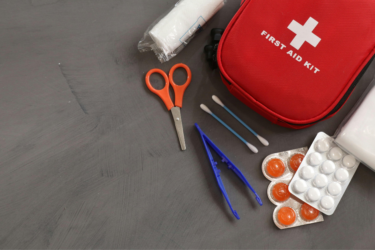Driver’s education is boring for everyone involved, but it’s essential for students to learn how to drive safely. No one wants to be on the freeway next to someone who slept through the class teaching them how to merge! Driver’s education for people who have been convicted of a traffic violation can be similarly mind-numbing, causing many people to tune out and fail their final tests. So, how can you make driver’s education more interesting for you as a parent or educator and more engaging and effective for teens and students?
Individualize Each Course
You can tailor each course to the individual, particularly if the class is being taught in an online environment. By creating a course that is able to change based on each student’s strengths and weaknesses, you are able to keep students engaged while offering a more effective learning solution. They will feel more invested when it seems like the class is personalized just for them, and it encourages them to be more involved with the content.
Some ways to personalize a driver’s education course include things as simple as incorporating their names in the lessons to automatically repeating or emphasizing portions of tests or quizzes that they have had issues with. You can also create different coursework or practice work for different demographics. For instance, brand new drivers will have different needs than someone who is taking a course because they got into a collision. In the same way, someone who needs to take a driver’s education course because of a driving infraction will probably only need a quick refresher on basic traffic laws but may need more focus on the local ordinances regarding blood alcohol levels, safety training, or defensive driving techniques.
Gamification – Make Studying Fun!
Turn the driver’s education course into a fun game! You can add achievements and badges and offer coursework in a game-like format, which encourages longer learning sessions. Making studying fun also helps with memorization, so students and teens will be better prepared for the written portion of their tests.
Gamification can be easily added to a driver’s ed course simply by reformatting the quizzes and tests you already have. Putting mini-games and challenges sprinkled throughout the course will motivate students to “win” while increasing comprehension and retention. You may also notice that teens finish the course faster since they are able to stay focused on the content. Make sure that any noises or sound effects are optional since they may be more of a hindrance than a help for many students.
Pictures and Illustrations Tell a Thousand Words
Pictures and illustrations often communicate better than large blocks of text, and students have better memory retention when they have a visual representation of the material. When you add pictures and illustrations (maybe even video segments), the driver’s education course will have more to offer, and it will create better test results – not only in the classroom but also on the real drivers test.
Remove the Distractions
If you are teaching inside of a classroom, physical distractions may be an issue, and in an online environment ads, pop-ups, and unnecessary noises coming from plugins can be incredibly distracting. Install a popup and ad blocker to avoid many distractions. You may want to create separate flashcards or personalized quizzes in order to make studying easier and more effective for an upcoming driver’s test.
Take a test drive (pun intended) of your course, and make sure common issues aren’t going to be distracting or cause problems. Things like multiple videos auto-playing at the same time, flashing ads, or distracting font or color choices can make learning more complicated than it needs to be. Create an environment that makes learning as painless as possible so that it will be easier to pass the road test, and get their license on the first try.
Use Statistics to Help Students Learn their Individual Weak Areas
Even ungraded quizzes offer insights into a student’s strong and weak areas. Use statistics to see what areas they’re struggling with, and provide individualized instruction and guidance to make sure they succeed. If a student doesn’t understand the way something was explained, you may want to have several options that describe the section in different words or offer both text and video selections so that they can learn in the way that best works for them.
You can also use data such as how long it took each student to complete each part of the course to help you better understand what they need to review. You can usually skip over the review of parts of the course they aced so that they don’t get bored, such as if they quickly got through the basics but stumbled over some of the more challenging coursework. Creating a comprehensive review that’s tailored to the needs of each teenager and student is one way to make your course stand out from the rest.
By Increasing Engagement, You Increase Success
A driver’s education class that’s engaging and effective will not only make it easier for students to pay attention, it will also improve the rate at which your students pass. Driver’s education has a reputation for being one of the most tedious courses you can take, but a driver’s ed class doesn’t have to put students to sleep. Incorporating game-like qualities, photos, illustrations, and making the course personalized for each student will keep students engaged in a fun, effective way.
Tim Waldenback is the co-founder of Zutobi Drivers Ed, a gamified e-learning platform focused on online drivers education to help teens get their license. Tim founded Zutobi to make world-class driver’s education fun, affordable and easily accessible for all.





